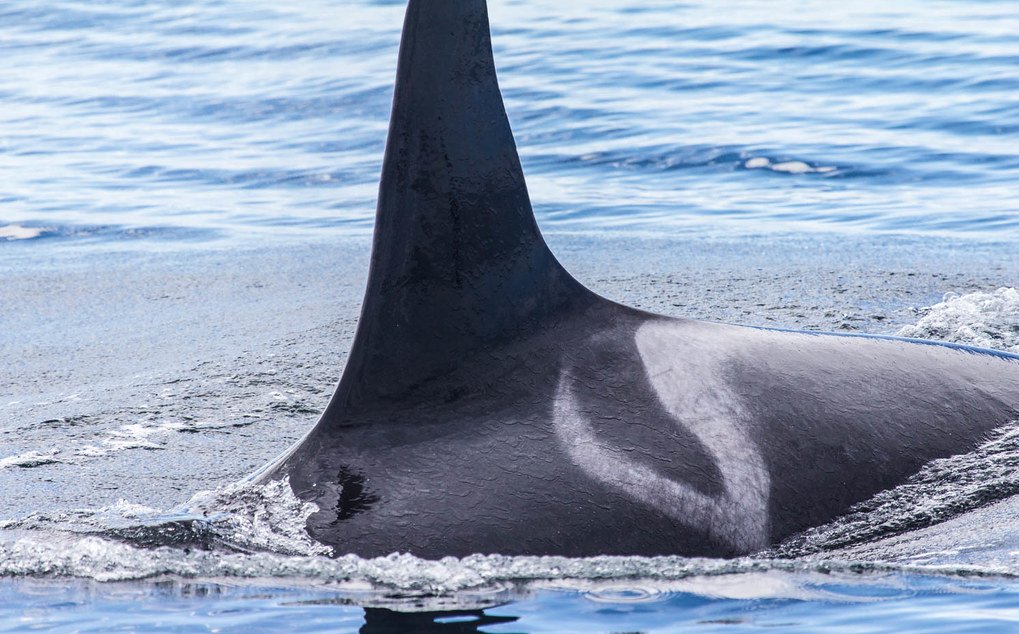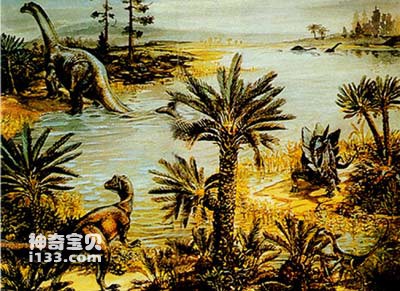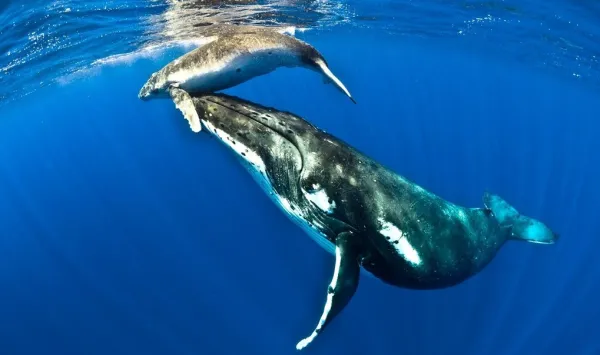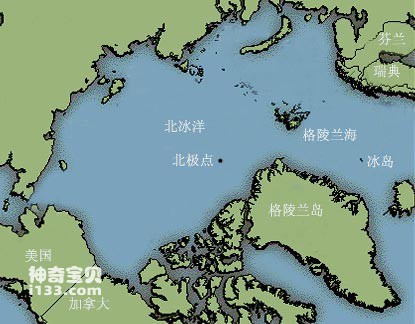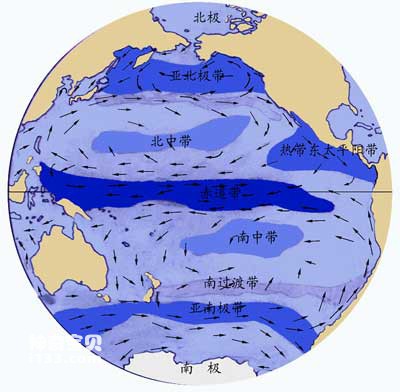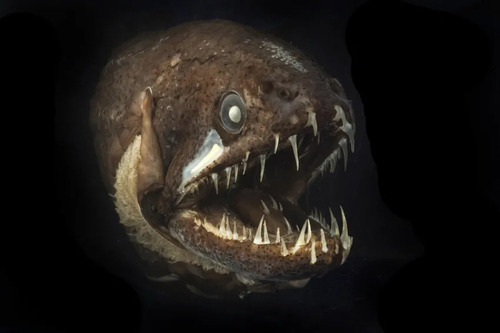The deep sea holds some of the most mysterious and ancient creatures known to science. These living fossils have survived for hundreds of millions of years, witnessing the rise and fall of countless species while remaining largely unchanged. In this article, we will explore the remarkable "deep-sea living fossils" from the oldest to the more recently evolved, revealing their unique characteristics and how they have adapted to life in extreme ocean environments.
1. Nautilus: 500 Million Years of Survival
The nautilus is one of the oldest known deep-sea animals, with ancestors that roamed the seas over 500 million years ago. These cephalopods, related to octopuses and squids, have maintained their coiled, shell-covered bodies for eons, making them an iconic example of living fossils.
Key Features:
Chambered Shells: The nautilus has a coiled shell divided into chambers that help with buoyancy control. This allows them to rise and descend through the water column by regulating the gas in these chambers.
Simple Eyes: Unlike their more evolved cousins, nautiluses have relatively simple, pinhole-type eyes without lenses, which are suited for low-light environments.
Longevity: Nautiluses have a long lifespan compared to other cephalopods, living up to 20 years.
Toxicity: Non-toxic.
Aggressiveness: Generally not aggressive; they are solitary and prefer to avoid confrontation.
Conservation Status: Some species are threatened due to habitat loss and overfishing.
Their slow evolution and minimal changes over time are largely attributed to their deep-sea habitat, where conditions have remained relatively stable.
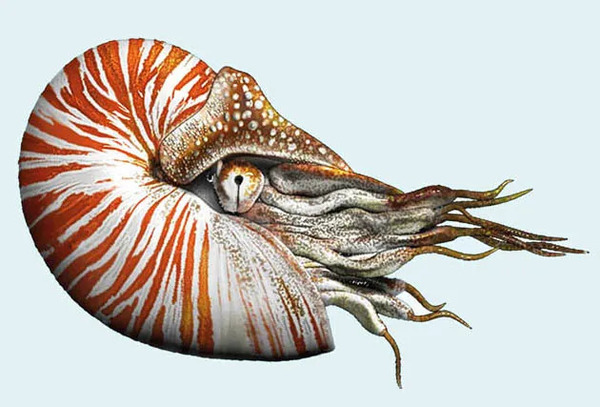
2. Horseshoe Crab: 450 Million Years and Counting
Horseshoe crabs are often referred to as "living fossils" because their basic body structure has remained the same for around 450 million years. Despite their name, horseshoe crabs are more closely related to spiders than to true crabs.
Key Features:
Hard Exoskeleton: The horseshoe crab's protective shell is crucial for survival in harsh environments. This tough exterior has allowed them to avoid many predators.
Compound Eyes: They possess complex eyes that are sensitive to light, which is useful in their shallow coastal habitats. However, they can also be found in deeper waters.
Blood Chemistry: Horseshoe crabs have unique blue blood due to copper-based hemocyanin. Their blood is used in medical applications to detect bacterial contamination in pharmaceuticals.
Toxicity: Non-toxic.
Aggressiveness: Non-aggressive; they pose no threat to humans.
Conservation Status: Some species are at risk due to habitat loss and overharvesting for bait and medical use.
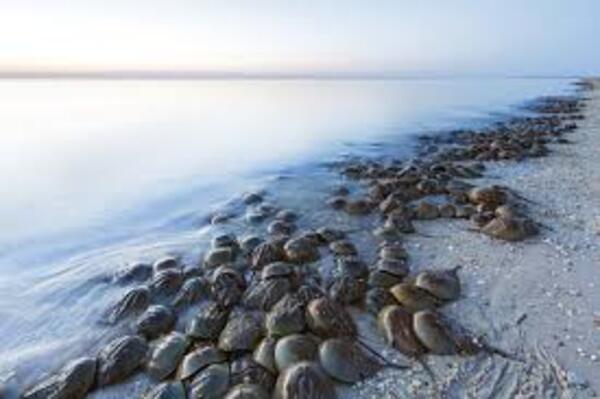
3. Coelacanth: The Ancient Fish Thought to Be Extinct
Once thought to be extinct for over 65 million years, the coelacanth was rediscovered in 1938, swimming off the coast of South Africa. This deep-sea fish belongs to a lineage that dates back 400 million years and has remained mostly unchanged since the time of the dinosaurs.
Key Features:
Lobed Fins: Unlike most fish, coelacanths have lobed fins that resemble primitive limbs. Scientists believe these fins are a remnant of the evolutionary transition from sea to land.
Electroreception: Coelacanths possess an organ called a "rostral organ" that helps them detect prey in the dark, deep waters through electrical fields.
Slow Movement: Their metabolism is adapted to cold, deep-sea environments, so they move very slowly and use energy efficiently.
Toxicity: Non-toxic.
Aggressiveness: Generally not aggressive; they are deep-sea dwellers and tend to be elusive.
Conservation Status: Critically endangered due to limited habitat and low reproduction rates.
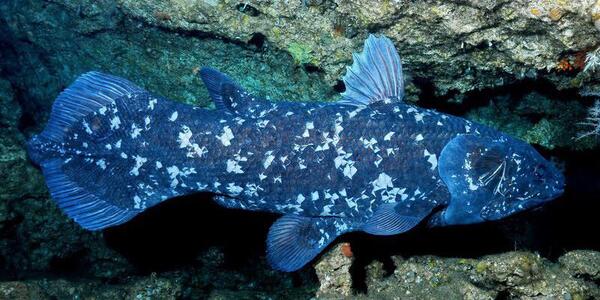
4. Sturgeon: 200 Million Years of Evolutionary Success
Sturgeons are another group of ancient fish that have been around for more than 200 million years. These large, slow-moving fish are found in both freshwater and marine environments, including deep rivers and coastal areas.
Key Features:
Cartilaginous Skeleton: Despite being bony fish, sturgeons have a largely cartilaginous skeleton, similar to sharks. This flexible structure aids them in deep waters.
Caviar Production: Sturgeon eggs, known as caviar, are highly prized in culinary circles. Unfortunately, this has led to overfishing and endangerment of several species.
Barbels for Feeding: Sturgeons use sensory organs called barbels to detect food on the murky river or ocean floors, where visibility is often poor.
Toxicity: Non-toxic.
Aggressiveness: Non-aggressive; they are mostly bottom feeders and not a threat.
Conservation Status: Many species are endangered due to overfishing and habitat loss.

5. Goblin Shark: The Elusive Deep-Sea Predator
The goblin shark is a rare and unusual species of shark that has been around for 125 million years. It is often referred to as a "living fossil" due to its primitive features and deep-sea habitat.
Key Features:
Extending Jaw: One of the most fascinating aspects of the goblin shark is its ability to extend its jaws dramatically outward to catch prey. This jaw mechanism is unique among sharks.
Pinkish Skin: The goblin shark's pink coloration comes from blood vessels visible through its semi-translucent skin, which is a trait that helps camouflage it in the deep sea.
Electroreception: Like other sharks, goblin sharks use special sensors called ampullae of Lorenzini to detect the electrical fields of prey, an essential adaptation for hunting in the dark ocean depths.
Toxicity: Non-toxic.
Aggressiveness: Non-aggressive; they are deep-sea predators that rarely interact with humans.
Conservation Status: Not well studied, but considered vulnerable due to limited sightings and habitat degradation.
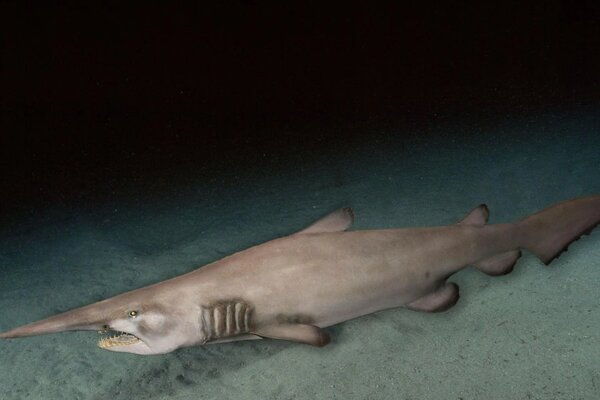
6. Vampire Squid: A Deep-Sea Enigma
Though it looks like a squid, the vampire squid is a unique creature that belongs to its own order, Vampyromorphida, which evolved around 300 million years ago. It thrives in oxygen-depleted environments in the deep sea, far below the reach of sunlight.
Key Features:
Bioluminescence: Vampire squids produce light using special photophores on their bodies. This helps them confuse predators or attract prey in the pitch-black depths of the ocean.
Defense Mechanism: Instead of using ink like other cephalopods, the vampire squid ejects a cloud of sticky, bioluminescent mucus to ward off predators.
Low Metabolism: Living in an oxygen minimum zone, the vampire squid has evolved an extremely low metabolic rate, allowing it to survive in areas where most other creatures would struggle.
Toxicity: Non-toxic.
Aggressiveness: Non-aggressive; they feed on detritus and prefer to avoid threats.
Conservation Status: Data-deficient, but not currently considered endangered.
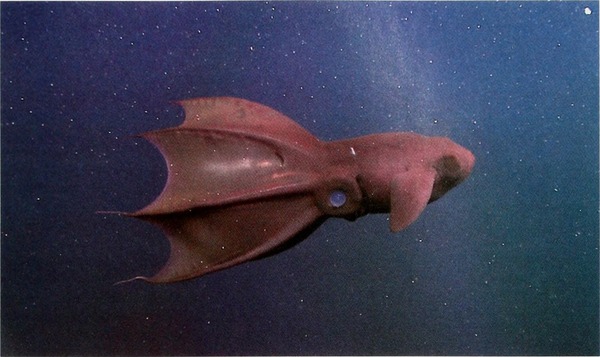
7. Frilled Shark: A Shark with Snake-like Movements
Another ancient shark species, the frilled shark, has been around for at least 80 million years. It is a rarely seen, deep-sea predator with a long, eel-like body that resembles a mythical sea serpent.
Key Features:
Gills with Frilled Edges: The frilled shark gets its name from the frilly appearance of its six pairs of gills, which are larger and more pronounced than those of most sharks.
Flexible Jaws: Its wide mouth and flexible jaws allow it to swallow prey whole, particularly squid and smaller fish. This adaptation is crucial for hunting in the deep sea, where food can be scarce.
Slow Swimming: The frilled shark's long, serpentine body moves in a slow, undulating fashion, conserving energy while it searches for prey in the cold, deep waters.
Toxicity: Non-toxic.
Aggressiveness: Non-aggressive; they mainly feed on smaller fish and squid.
Conservation Status: Data-deficient, but not currently threatened.
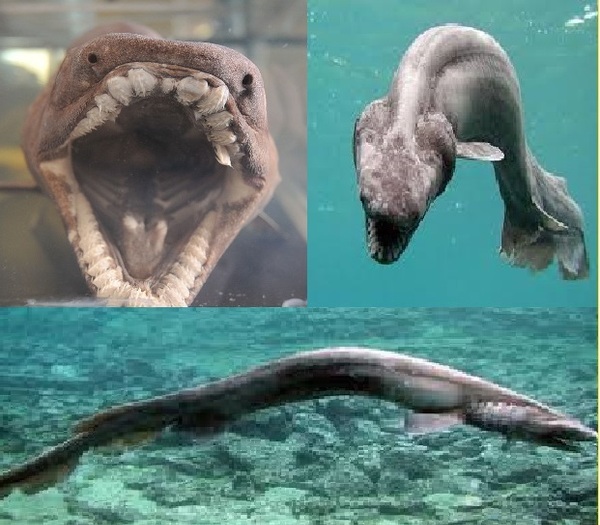
8. Sea Sponges: Ancient Survivors
Sea sponges are among the oldest multicellular organisms on Earth, dating back 600 million years. Their simple body structure has changed little over time, making them true living fossils.
Key Features:
Porous Bodies: Sponges have porous bodies that allow water to flow through, facilitating nutrient absorption and waste removal.
Varied Habitats: Found in a range of ocean environments, from shallow reefs to the deepest trenches, sponges play essential roles in marine ecosystems.
Regeneration: Sponges have remarkable regenerative abilities, allowing them to recover from damage efficiently.
Toxicity: Some sponges can produce toxins, but most are harmless.
Aggressiveness: Non-aggressive; they are filter feeders and do not pose a threat.
Conservation Status: Varies by species; some are threatened due to habitat destruction.

9. Deep-Sea Bristle Worms: Prehistoric Polychaetes
Bristle worms, particularly the species from the family Eunicidae, have been around for at least 100 million years. They inhabit various marine environments, including the deep sea.
Key Features:
Segmented Bodies: Their long, segmented bodies are covered in bristles, aiding in locomotion and burrowing into sediment.
Predatory Behavior: Some species are active predators, using their specialized jaws to capture prey, showcasing adaptations to their ecological niches.
Environmental Indicators: Bristle worms can be indicators of ocean health, responding to changes in water quality and habitat conditions.
Toxicity: Some species have venomous bristles that can irritate skin.
Aggressiveness: Generally not aggressive; they can be predatory but typically avoid confrontation.
Conservation Status: Varies widely; most are not at risk.
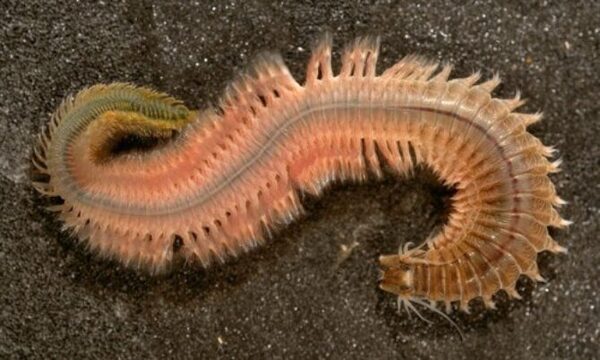
10. Tuatara: An Ancient Reptile
While primarily a land creature, the tuatara has deep-sea relatives. This reptile, often considered a "living fossil," has existed for over 200 million years.
Key Features:
Unique Anatomy: Tuataras possess a third "parietal eye" on the top of their heads, which helps regulate circadian rhythms and seasonal behaviors.
Slow Reproduction: They have a slow growth rate and long lifespan, with some individuals living over 100 years, making them a symbol of longevity in evolution.
Ecological Importance: As predators, tuataras play a crucial role in controlling insect populations, illustrating the interconnectedness of ecosystems.
Toxicity: Non-toxic.
Aggressiveness: Non-aggressive; they are shy and prefer to escape rather than attack.
Conservation Status: Vulnerable, primarily due to habitat loss and introduced predators.
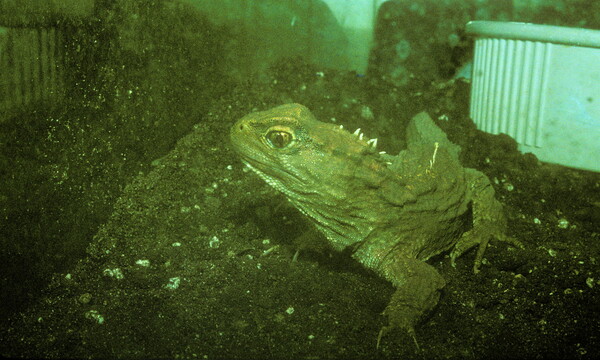
The Ongoing Journey of Exploration
The deep sea is a treasure trove of ancient life, where these living fossils have adapted to thrive in environments that challenge the limits of survival. Each species, from the nautilus to the aquarium/sea-sponge.html">sea sponge, offers valuable insights into evolution, resilience, and the ecological balance of our oceans. As we continue to delve into the mysteries of the deep, these remarkable creatures remind us of the planet's rich biodiversity and the importance of preserving it for future generations.
The Wonders of Deep-Sea Living Fossils
These incredible deep-sea creatures have not only survived the test of time but have also thrived in one of the planet’s most extreme environments. Their adaptations to life in the deep ocean — from bioluminescence to electroreception — are a testament to the resilience of life. By studying these ancient organisms, scientists continue to uncover secrets about Earth’s evolutionary history and the delicate balance of life in the ocean’s depths.
The deep sea remains one of the least explored areas on Earth, and these living fossils remind us of the vast mysteries still waiting to be uncovered. As research advances, we may discover even more about how these ancient creatures have survived and what they can teach us about both the past and future of life on our planet.

